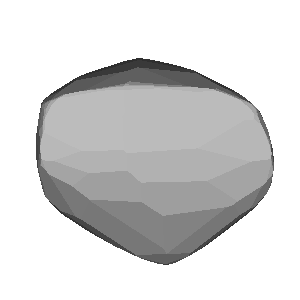2013-04-25 / TYC 0844-00294-1 / (255) Oppavia
| # | OBS | Observer | Occ | Meth. | Instr. | CC | TSRC | UT1 | UT2 | UT3 | UT4 | UT2E | UT3E | Dur. | Chrd |
|---|---|---|---|---|---|---|---|---|---|---|---|---|---|---|---|
| 1 | show | Simone Bolzoni | O+ | VIS | M203 | IT | RAD+ | 20:12:00 | 20:15:00.53 | 20:15:05.76 | 20:18:00 | 0.3 | 0.3 | 5.23 | 31.4 |
| 2 | show | Jean Vilar | O+ | VID | M200 | FR | GPS++ | 20:13:05 | 20:14:08.05 | 20:14:15.68 | 20:15:02 | 7.63 | 45.8 | ||
| 3 | show | Carlo Gualdoni | O- | VID | M250 | IT | 20:12:00 | 20:19:00 | |||||||
| 4 | show | Alberto Ossola | O- | VID | M230 | CH | 20:13:25 | 20:16:59 | |||||||
| 5 | show | Stefano Sposetti | O- | VID | M400 | CH | 20:10:25 | 20:18:08 | |||||||
| 6 | show | Jose De Queiroz | O- | VID | M900 | CH | 20:12:03 | 20:16:24 | |||||||
| 7 | show | F. Van Den Abbeel | O- | CCD | M200 | BE | 20:12:02 | 20:15:03 | |||||||
| 8 | show | Harrie Rutten | O- | VID | M356 | NL | 20:11:00 | 20:16:00 | |||||||
| 9 | show | Henk De Groot | O- | VID | M356 | NL | 20:10:14 | 20:16:49 | |||||||
| 10 | show | Jan-Maarten Winkel | O- | VID | M310 | NL | 20:12:00 | 20:14:00 |
10 observations found in db: euraster
Available (probably) matching predictions (click on the link to switch):| JPL#63 : f86c3338-942b-4f3f-94e4-f54b6d85f676 [db: observed] |
Using prediction f86c3338-942b-4f3f-94e4-f54b6d85f676 for map and profile fit
| Ellipse and circular profile fits to the timings (chords) |
|---|
|
|
Auto-Fit Result: X0,Y0 = -1758.3, 12.7 km Circular diameter = 47 km From 2 chords (VID,VIS) You can enter space separated chord numbers (example: 11 4 8) or a method like VIS to ignore all visual timings, or a time source like RAD and NTP (but not GPS). If the plot disappears, then there are less than 2 chords left (too much ignored, go back with browser). Check SiMDA for size and mass data. Check Johnston Archive for satellites. |
Sky projection (artificial light) for occ. time: 2013-04-25, 20:15 UT (JD = 2456408.344)
| DAMIT | Q | P (h) | λ, β | JD0 | JD-JD0 | φ0 | Version | Modified | Vol-equiv D | Cmnt |
|---|---|---|---|---|---|---|---|---|---|---|
| # 4939 | 1.0 | 19.497 | 134°, 46° | 2.45723e6 | -821.7 | 0.0° | None | 2020-10-05 | not scaled | 2019-10-23 |

Image size: 300px. Transparent image background for copy & paste
| Map with groundtrack and observer stations |
|---|
| Event Details |
|---|
Occultation UUID [and DB] : f86c3338-942b-4f3f-94e4-f54b6d85f676 [observed] Occultation Date + Time : 2013-04-25 at 20:22:48 UT +/- 0.06 min [1] Object Designation : (255) Oppavia Orbit Class : MBA Star Designation : GDR3 3887407025965510272 Star Coordinates (ICRF) : RA = 10 25 47.3909, DE = +14 30 27.083 [2] Star Magnitudes : G = 11.63 mag, RP = 11.14 mag, BP = 11.95 mag Object Magnitude : V = 14.99 mag Estimated Magnitude Drop : 3.4 mag Estimated Max. Duration : 9.5 sec Object Mean Diameter : 57 km (src: astorb) Speed of the shadow : 6.0 km/s Elongation to Moon & Sun : 63° (sunlit = 100%), Sun = 117° Cross-track uncertainty : 3.3 mas = 4 km = 0.08 path-width (1-sig) RUWE and duplicate source : 0.81 mas, dup.src = 0 (0:false, 1:true) Ephemeris Reference : JPL#63 [1] time t0 of closest geocentric approach c/a, [2] including proper motion until t0 |
| More Data and Informations |
|---|
(If error 404: link not valid which means no data available)
| Aladin Sky Atlas |
|---|
| Aladin Lite direct link (has Gaia overlay) |